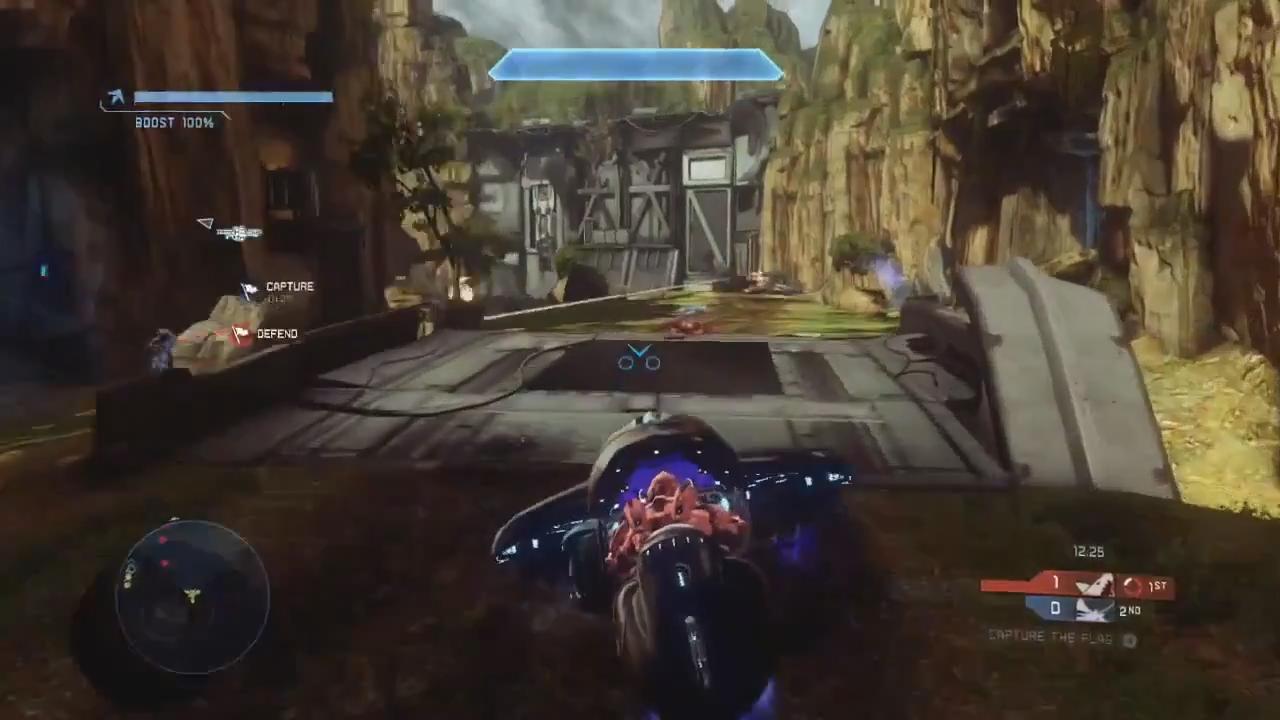Mass Effect 3 Map System, image retrieved from: http://mycheats.1up.com/view/section/3175099/32248/mass_effect_3/xbox_360
The idea behind the Mass Effect navigation series is a series of maps that give you an overview of different areas in the game. One of the most interesting features of this map system is that rather than being stylised, the map actually shows a birds-eye view of the area, allowing for easy navigation.
The map also has highlighted all the points of interest in this particular area, as well as a highlighted option of the specific objective at the moment.
Call of Duty: Modern Warfare, image retrieved from: http://www.neowin.net/news/remedy-next-xbox-and-ps-consoles-are-a-quantum-leap
The game Call of Duty: Modern Warfare utilises a different map system entirely. It shows a map in the top left corner that displays about an 80m x 80m square of the surrounding area as stylised map, showing the buildings and general shape of the usable area. The map is set to rotate depending on which way you are facing, so that up on the map will always be straight ahead of you in the game.
While this system is effective in-game, it does have a drawback of a lack of a general overview. However, this view around the user does give a really good feel for what the surrounding area is like, and could allow for points of interest to be shown.
Halo 4 Capture The Flag Screenshot, image retrieved from: http://games.softpedia.com/progScreenshots/Halo-4-Capture-The-Flag-Trailer-Screenshot-117971.html
Halo has used a consistent system for how it works. Waypoints are placed, with a distance to them added on top of the waypoint. This system is rather useful, however if you're unfamiliar with the area, it's very difficult sometimes to navigate your way there. The location of other points of interest is also added in the Heads-Up-Display.
The drawback of the little radar at the bottom left is that unlike Call Of Duty, it doesn't show any of the actual area, just locations. You have no point of reference for the locations, which can make things very tricky at best.
The drawback of the little radar at the bottom left is that unlike Call Of Duty, it doesn't show any of the actual area, just locations. You have no point of reference for the locations, which can make things very tricky at best.
These games all seem to really love their Heads-Up-Displays (HUD), and I'm beginning to think of advancing on my last project from last trimester for 101.
Final Stop Motion: "A New Way Of Seeing" from Sebastien Voerman on Vimeo.
Using a pre-existing formula, I could enhance the capabilities of my Aug-Real Specs and make them capable of working with directions too. Using a heads up display would allow me to overlay a form of arrows onto the real world, as well as combine it with a waypoint system, as well as showing the surrounding points of interest.
I shall talk to the tutor. We shall see!




No comments:
Post a Comment